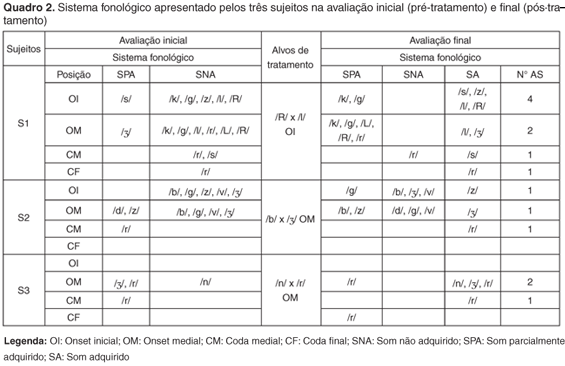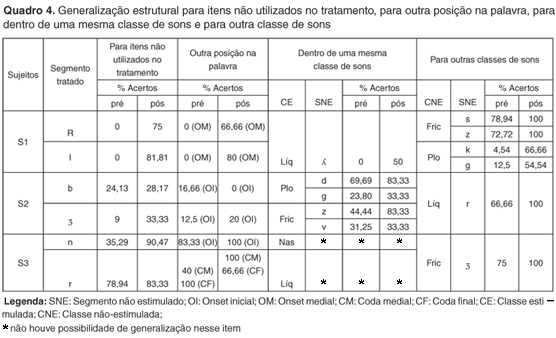The aim of this study was to verify the phonological changes obtained with treatment by the Modified Maximal Oppositions Model, using "reinforcement" or "contrast" approach, in subjects with different severity levels of phonological disorders (PD). Three male children, mean age six years old, with different severity levels of PD were submitted to speech and language evaluations, including phonological assessment and complementary exams. After initial evaluation, they were treated by the Modified Maximal Oppositions Model, using the "reinforcement" or "contrast" approach to distinctive features. The following structural generalizations were verified: items that were not used in the treatment; another position in the word; inside the same sound class; and another sound class. After the therapeutic process, subjects' phonetic inventories were complete, but the phonological system was incomplete for all subjects. S1, treated using the contrast [dors/cor] and [+/-cont], was still facing difficulty with [dors] and [-voc] after treatment. S2, treated based on reinforcement with [+voice], had a persistent difficulty regarding [+voice] after treatment. S3, treated by the reinforcement with [+soant], [-voc], [+voice] and [cor/+ant], showed, after treatment, difficulty only with [-voc]. After the therapeutic process, all types of structural generalizations were observed. It was found that the subjects treated by "reinforcement" as well as the one treated by "contrast" presented generalizations. As a result, it was not possible to conclude which was the most efficient approach to the treatment of PD.
Speech; Articulation disorders; Language; Child




